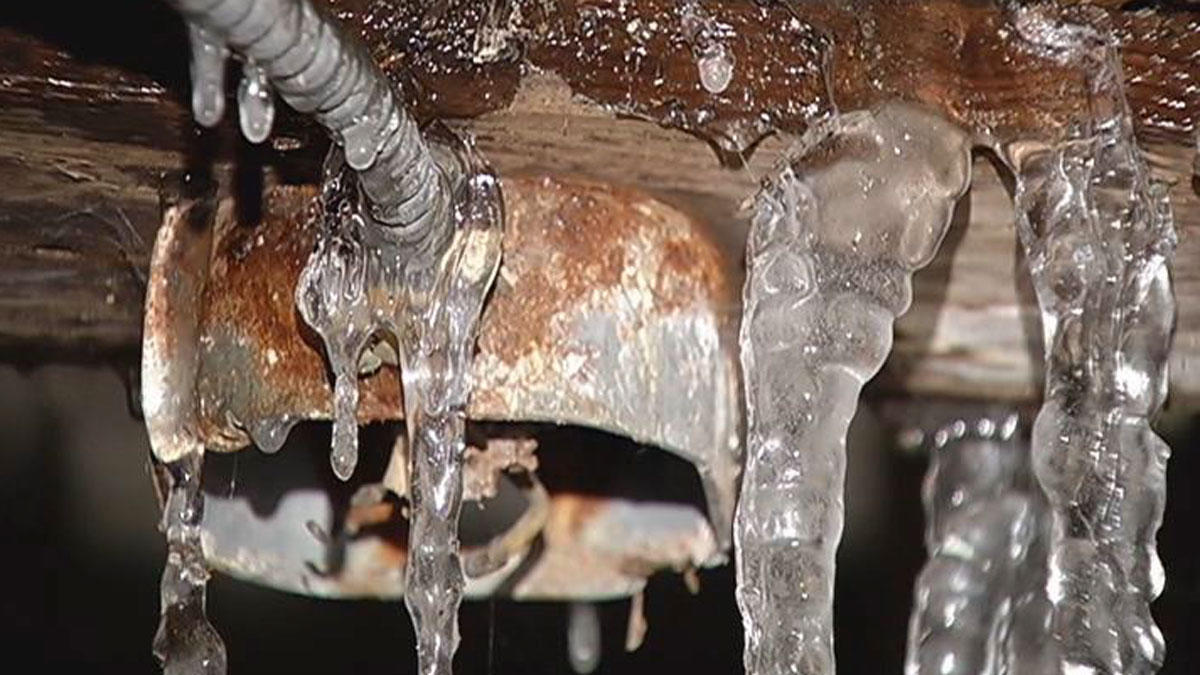We have stumbled on this post relating to Prevent Frozen Pipes down the page on the internet and figured it made good sense to relate it with you on this site.

Cold weather can wreak havoc on your plumbing, especially by freezing pipelines. Below's how to stop it from taking place and what to do if it does.
Introduction
As temperature levels decrease, the threat of frozen pipelines boosts, potentially causing pricey repairs and water damages. Understanding just how to stop icy pipes is critical for home owners in chilly environments.
Avoidance Tips
Insulating prone pipes
Cover pipelines in insulation sleeves or utilize warmth tape to safeguard them from freezing temperatures. Concentrate on pipelines in unheated or exterior locations of the home.
Home heating techniques
Keep indoor rooms sufficiently warmed, specifically locations with pipes. Open closet doors to allow warm air to distribute around pipelines under sinks.
Just how to recognize frozen pipelines
Search for lowered water flow from taps, uncommon smells or sounds from pipelines, and noticeable frost on subjected pipelines.
Long-Term Solutions
Architectural changes
Consider rerouting pipelines far from outside walls or unheated locations. Add added insulation to attic rooms, cellars, and crawl spaces.
Upgrading insulation
Invest in top notch insulation for pipes, attic rooms, and walls. Appropriate insulation assists keep constant temperatures and decreases the risk of icy pipes.
Protecting Outdoor Pipes
Garden hose pipes and outdoor faucets
Disconnect and drain pipes yard hoses before winter. Mount frost-proof faucets or cover outside taps with shielded caps.
Comprehending Icy Pipes
What triggers pipelines to freeze?
Pipes ice up when exposed to temperatures below 32 ° F (0 ° C) for expanded periods. As water inside the pipes ices up, it increases, taxing the pipeline wall surfaces and possibly triggering them to burst.
Threats and problems
Icy pipes can cause water supply interruptions, residential or commercial property damage, and costly repairs. Burst pipes can flooding homes and cause comprehensive architectural damage.
Signs of Frozen Water Lines
Determining icy pipes early can prevent them from rupturing.
What to Do If Your Pipelines Freeze
Immediate actions to take
If you suspect icy pipes, maintain taps open to eliminate pressure as the ice melts. Make use of a hairdryer or towels soaked in warm water to thaw pipes slowly.
Conclusion
Stopping icy pipelines requires positive measures and quick actions. By comprehending the causes, signs, and preventive measures, house owners can protect their plumbing throughout cold weather.
5 Ways to Prevent Frozen Pipes
Drain Outdoor Faucets and Disconnect Hoses
First, close the shut-off valve that controls the flow of water in the pipe to your outdoor faucet. Then, head outside to disconnect and drain your hose and open the outdoor faucet to allow the water to completely drain out of the line. Turn off the faucet when done. Finally, head back to the shut-off valve and drain the remaining water inside the pipe into a bucket or container. Additionally, if you have a home irrigation system, you should consider hiring an expert to clear the system of water each year.
Insulate Pipes
One of the best and most cost-effective methods for preventing frozen water pipes is to wrap your pipes with insulation. This is especially important for areas in your home that aren’t exposed to heat, such as an attic. We suggest using foam sleeves, which can typically be found at your local hardware store.
Keep Heat Running at 65
Your pipes are located inside your walls, and the temperature there is much colder than the rest of the house. To prevent your pipes from freezing, The Insurance Information Institute suggests that you keep your home heated to at least 65 degrees, even when traveling. You may want to invest in smart devices that can keep an eye on the temperature in your home while you’re away.
Leave Water Dripping
Moving water — even a small trickle — can prevent ice from forming inside your pipes. When freezing temps are imminent, start a drip of water from all faucets that serve exposed pipes. Leaving a few faucets running will also help relieve pressure inside the pipes and help prevent a rupture if the water inside freezes.
Open Cupboard Doors
Warm your kitchen and bathroom pipes by opening cupboards and vanities. You should also leave your interior doors ajar to help warm air circulate evenly throughout your home.

We hope you enjoyed reading our article on Helpful Tips to Prevent Frozen Pipes this Winter. Thank you for taking the time to read through our piece of content. If you enjoyed reading our page please be sure to pass it around. We love your readership.
Call Today